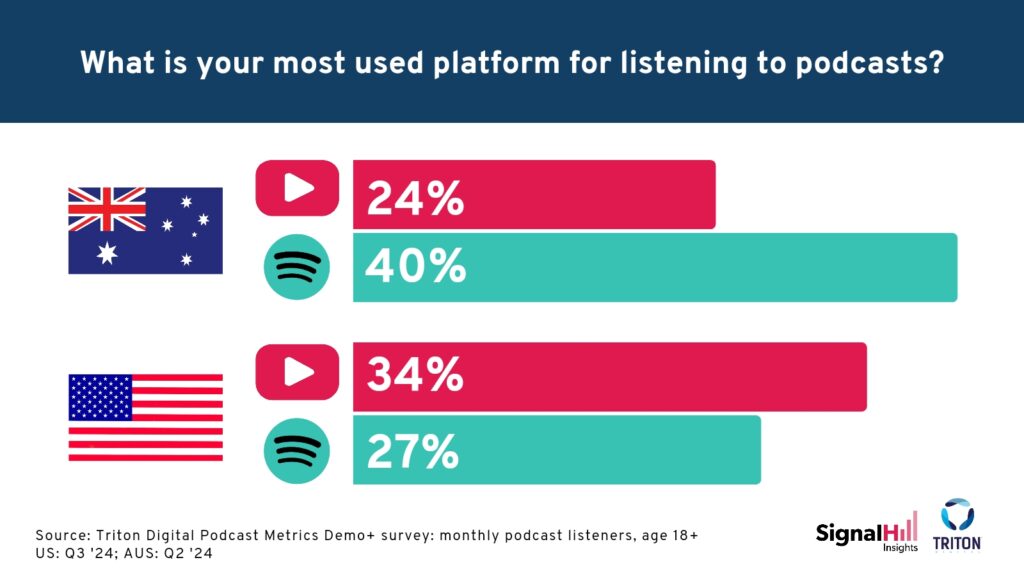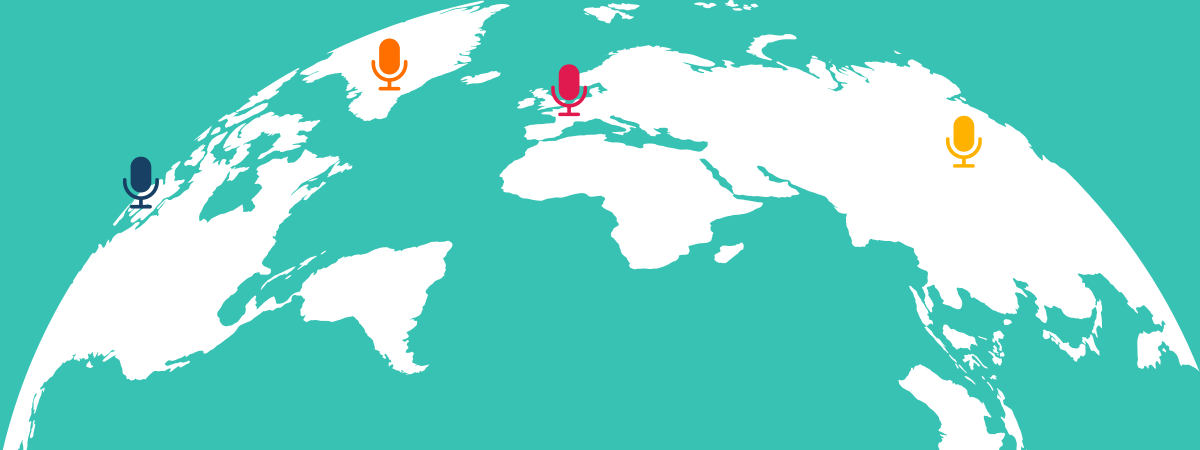Podcasting is uniquely global. Owing to the open ecosystem of RSS and the fact that the medium isn’t tied to any single platform, there are fewer barriers to international distribution than with much of digital media.
Not surprisingly, English-language podcasts have opportunities to reach audiences beyond a podcaster’s own national borders. Just one example is the US-based Crime Junkie, which ranks #13 in Australia, alongside other local shows.
However, just because content crosses borders, this doesn’t mean different national markets and audiences are the same, even if they share a language (or two).
The US Is Not the Default
As home to one of the largest podcast markets in the world, the industry has long been focused on the U.S. when it comes to listener research. Simply put, because of the outsized revenue opportunities, there have been more stakeholders willing to invest in studies covering American podcast audiences and advertising. Meanwhile, even though the U.S. led the way in the early days of podcasting, listening across the world is quickly catching up, promising an even greater pool of potential revenue.
The risk is that US-based research is generalized to represent podcast listening as a whole, regardless of nation or region. While people are people, local cultural and socioeconomic factors influence how and why they consume and engage with podcasts and advertisers. That’s why it’s important for there to be research that is grounded on a market-by-market basis.
YouTube vs. Spotify – a Tale of Two Countries
YouTube becoming the most used podcast platform has been a big story in US podcasting for the last two years. This, along with the rising popularity of YouTube-focused shows like New Heights and This Past Weekend with Theo Von, might cause you to assume this is a global trend.
So, let’s look at Australia again. According to the survey we conduct in support of Triton Digital Podcast Metrics Demos+, 40% of monthly podcast consumers aged 18+ in Australia say Spotify is their most used platform. That overshadows YouTube, which claims only 24%.
This is the mirror image to the US, where 34% of American podcast consumers say they use YouTube most, while 27% say it’s Spotify for them.
It’s not a trivial difference, and something to take into account if you’re building a podcast audience strategy Down Under. You can’t assume that the trends we see in the States are playing out the same way elsewhere.

Championing a Global Outlook
As a company founded in Canada, Signal Hill Insights has championed a global outlook since day one. With a population and economy that is smaller than its southern neighbor, there’s more incentive for Canadian firms to work internationally.
It also means we have a heightened sensitivity to national and cultural differences, working hard to leave our assumptions behind and go in with an open mind. Working with local partners is also key – in Australia we work with Triton Digital to provide Demos+ to the industry group Commercial Radio and Audio. The mutual benefit is that we can combine our multi-country experience in researching podcast listening with CRA’s knowledge of the Australian market.
Even though, I, myself, am an American, living in the States, my experience as a researcher has taught me to be on the lookout for biases, especially my own. The countermeasure is to embrace curiosity.
I’m thrilled that we continue to build new international partnerships – like the extension of Triton Demos+ to the Netherlands announced this past week. How can we help you understand podcasting somewhere new, or in your own backyard? Drop us a line.




